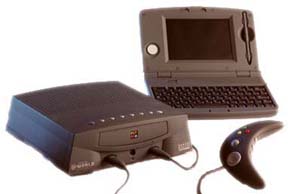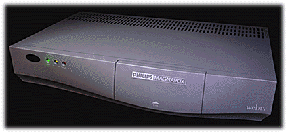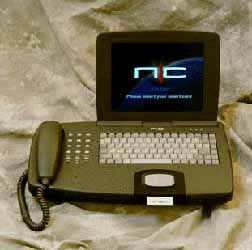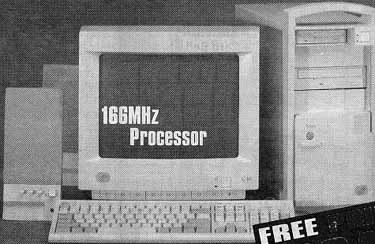Ubiquitous Software: An Information Network Paradigm
Chapter 4.
Supporting Research
"Objects will have to know how to display themselves under different circumstances, such as over the phone, on a workstation, , Net PC, or based on various levels of interest."
Anonymous
This chapter is used to describe recent events that make Information Networks and Ubiquitous Software valid topics. Also included here are references to related work being conducted by others that support my thesis.
Related Research
RemoteExplorium, Agentsheets, WebQuest are systems currently being developed by Hal Eden, Mike Eisenberg, Cerhard Fischer, and Alex Repenning. Their research, supported by the National Science Foundation, was recently featured in Communications of the ACM (April 1996, p40) in an article titled: "Making Learning a Part of Life."
RemoteExplorium (http://www.cs.colorado.edu/~13d/systems/Remote-explorium) is an effort to combine design environments with networking media. It will pursue the presentation of children's booklets on the WorldWide Web along with the development of classroom materials. Longer-term projects include the expansion of the system into the creation of "dynamic sculptures" combining mathematical, engineering, and artistic elements.
Agentsheets is an initial multiuser agents prototype (http://www.cs.colorado.edu/~13d/systems/agentsheets), supporting collaborative, synchronous design activity. Agentsheets is a programming substrate that has been used in the past four years to create a large number of domain-oriented design environments including simulations, visual programming, and game environments.
A separate effort is WebQuest, using the realm of a game that can be authored by children as a Web exploration tool in the possible spirit of "Where on the Web is Carmen San Diego." The vision is to create Web end-user languages in support of distributed constructionism allowing users to test, create, and share interesting chunks of end-user programs via the Web.
Daniel C. Edelson, Roy D. Pea, Louis M. Gomez have a project called Collaboratory Notebook. Implemented as a network, hypermedia database, it is an effort to support widespread collaborative, open-ended learning activities. The software provides opportunities for teachers to monitor students' progress more closely, and to guide their efforts earlier and less dramatically. A version of Notebook to support remote collaboration is currently in a CoVis testbed involving thousands of students in over 40 schools across the U.S.(4)
Matti Hamalaine, Andrew B. Whinston, and Svetlana Vishik propose education brokers as a model for electronic markets on the Internet. They said "As perhaps th world's largest information industry, education is set to adapt a new just-in-time, on-demand approach to delivering its products through virtual universities by way of the Internet administered through the technology of electronic commerce.(5)
Recent Events
1996 is the 50th birthday of digital computing, IEEE Computer Society, and George North. It is also the 30th anniversary of my introduction to computers--my life hasn't been the same since. Perspective, the relationship of aspects of a subject to each other and to the whole of computer science, is one advantage a long carrier. The October 1996 issue of COMPUTER (IEEE Computer Society) was a very important resource, even though it came to me after the first draft of my thesis was complete. This issue is a survey of "50 Years of Computing." Featured are articles on microprocessors, data management, software engineering, networks, the Web, standards, artificial intelligence, and supercomputing. Also provided is a chronicle of the important events of computer history starting with the abacus and ending with Java.
The seminal event that led to this thesis was the May, 1995 announcement by Sun of Java. The speed with which Java was accepted by the world of the computer industry is unprecedented. Java brings real tools to market that allows architecture-neutral development. Being network-aware, Java makes possible an Information Network paradigm. Because of the JavaOS, investments in existing paradigms are preserved. The power of Java to both support existing systems while encouraging new development represents the first time that new technology can be introduced without expensive conversion of legacy systems.
Java makes possible the building of objects that know how to display themselves under different circumstances, such as over the phone, on a workstation, a Net PC, or based on various other levels of abstraction. Java effectively hides architecture and user interface issues, so that designers can concentrate on the real issues of solving domain problems. Since Java does not allow programmer bit-twiddling, less time will be spent on implementation mechanisms and more time spent implementing. Since Java roots are objects, more effective reuse strategies will develope as libraries of Java objects grow. These are all win-win propositions.
Because of theses events, software engineers can now collect the promised rewards of object technology. Information networks provide new markets large enough to support software reuse. Java provides composition, inheritance and polymorphism needed to build reusable software--Ubiquitous Software.
The Capital Markets group at First Union Corp. in Charlotte, N.C., has embraced Java so its programmers can much more quickly deliver new functions and features. "Instead of having to manage a global (monolithic) application, we can manage individual applets, updating them in real time," said Tom Kitrick, vice president of strategic plannings for the group's IS are, this is beta-testing five JavaStations. First Union has embraced object-oriented, distributed computing over a TCP/IP WAN. "To extend this model, and use Java and a thin client is what we're trying to do," said Kitrick.(3)
Network Computers
Network Computers (NCs) is the evidence that a paradigm shift has already occurred. Many vendors have announced support for NCs, and some have already shipped products. NCs are computers without all the trappings that make PCs so difficult to master and to maintain.
"What's become a real issue for us is the cost of keeping up with the Windows/Intel platforms," said Peter Palmisano, chief information officer at environmental consulting firm Camp Dresser McKee, Inc. "Migrating our installed base from DOS and Windows 3.1 to Windows 95 and NT is the biggest capital cost we've ever faced. The lightweight NC -- integrated with the Web and legacy data -- could sharply reduce such costs. It also could lower the equally onerous costs of installing and maintaining PC applications and training end users."(2)
Like the PC before it, the NC will be filling a void rather than displacing existing systems. This void is potentially a very large market. Over 60% of families in the US do not currently own a computer, over 90% world wide. In America's classrooms, there is one computer for every thirty-five students.
Dennis Bosma, director of management information systems with Kahler Realty Corp. in Rochester, Minn. says "We spend just a ton of time on configuring, reconfiguring, updating software and other activities that interrupt productivity for devices on our LAN. We think the Network Station will eliminate all that fuss."(1) Kahler Realty Corp. was a beta test site for IBM's Network Station.
"Configuring and managing desktops by the thousands is an overwhelming cost," said Mike Prince, chief information officer of Burlington Coat Factory Warehouse Corp. in Burlington Mass. "High support cost are the real killer. That's what makes the thin client (Network Computer) very appealing."(3)
To simplify and speed up software distribution, Florist FTD Corp. plans to phase out 17,000 dumb terminals among its members in favor of JavaStations ... providing added "network intelligence."(3)
|
Figure C4.1: IBM's Network Station to be released in November 1996. A $800.00 NC. |

Figure C4.2: Apple's Pipin to be released in November 1996. A $800.00 NC and CD-R player |

Figure C4.3: Magnavox WebTV available now for $300 |

Figure C4.4: Sun's Java Station Tower available now for $799 |

Figure C4.8: Oracle's NC available November 1996 |

Figure C4.6: Typical WinTel "Fat" PC available everywhere |
PC Week, November 1, 1996 2:10 PM ET
Oracle developing Java extension for SQL By Juan Carlos Perez
Oracle Corp. will declare its Java-everywhere strategy next week at the Oracle OpenWorld show in San Francisco. And to prove its dedication to Sun Microsystems Inc.'s platform-independent language, Oracle is developing a Java extension called JavaDB.
JavaDB is being designed to let developers more easily embed SQL statements into Java, Oracle officials said. Java DB will let Oracle's NCA (Network Computing Architecture) application servers make Java calls to object data in a database. It also will let a Network Computer access the database directly, they said.
Oracle is putting its weight behind Java because the language promises to be the glue to hold together tomorrow's distributed computing environments, officials said.
"Java will replace C++ as the object-oriented programming language of choice," said Ken Jacobs, vice president of server product strategy at the Redwood Shores, Calif., company.
In an effort to make JavaDB an industry standard, Oracle will make available next year a pre-compiler for free downloading that translates JavaDB programs into JDBC (Java Database Connectivity) programs, officials said.
1. Cooney, Michael, IBM gets small: 'Net appliance ready for users, NetworkWorld, Volume 3, Number 37, September 9, 1996
2. Messmer, Ellen, Carol Silwa, John Cox, Oracle's Internet Bet, NetworkWorld, Volume 13, Number 40, September 30, 1996, p1
3. Cox, John, Carol Silwa, Ellen Messmer, Customers take sides in coming 'Net device battle', NetworkWorld, Volume 13, Number 45, November 4, 1996, p1
4. Edelson, Daniel C., Roy D. Pea, Louis M. Gomez, The Collaboratory Notebook, Communications of the ACM, Volume 39, Number 4, April 1996
Annotation: An issue devoted to Learner-centered education.
5. Hamalainen, Matti, Andrew B. Whinston, Svetlana Vishik, Electronic Markets for Learning: Education Brokerages on the Internet, Communications of the ACM, Volume 39, Number 6, June 1996, p51.
[ Previous | Next | Table of Contents | Top ]